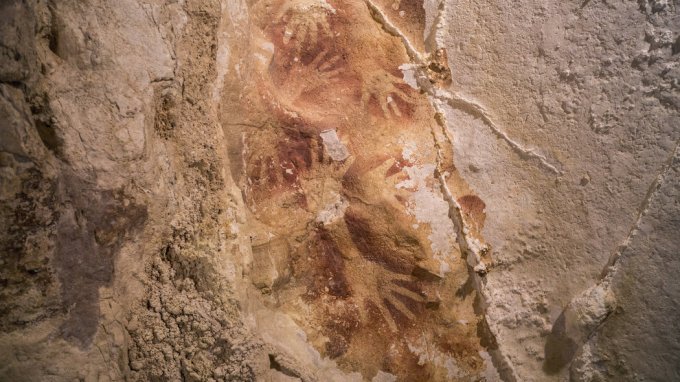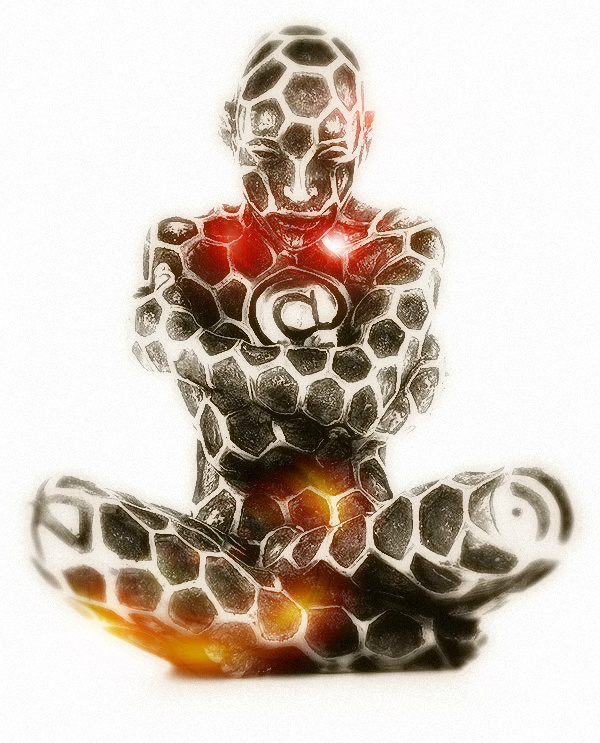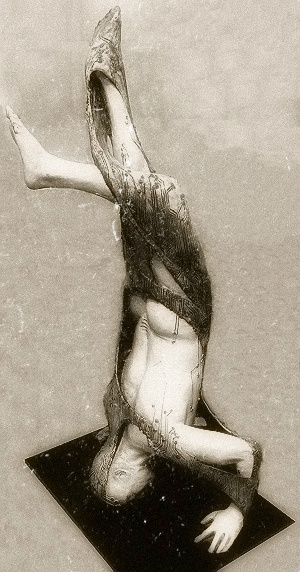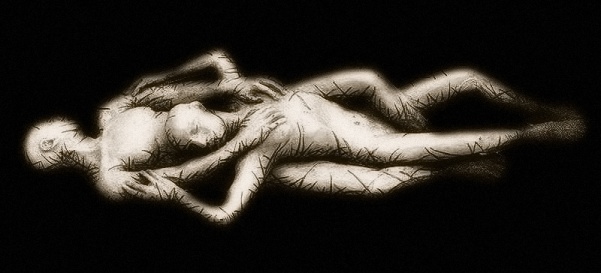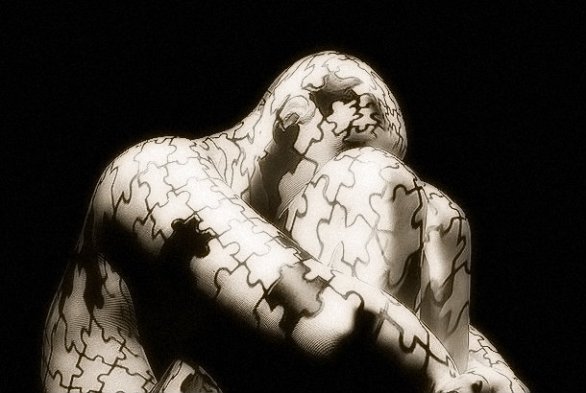I don’t think there is any bigger satisfaction for an artist than witnessing a “real” debate on his works. Not those idle arguments among critics on specialized magazines, which are barely read even by those who are directly interested, but rather those rare occasions when the audience has an opinion on the subject and lively talks about it, splitting in opposing factions, supporters and detractors, according to principles related not only to each person’s tastes, which can be refined, but are also always arguable.
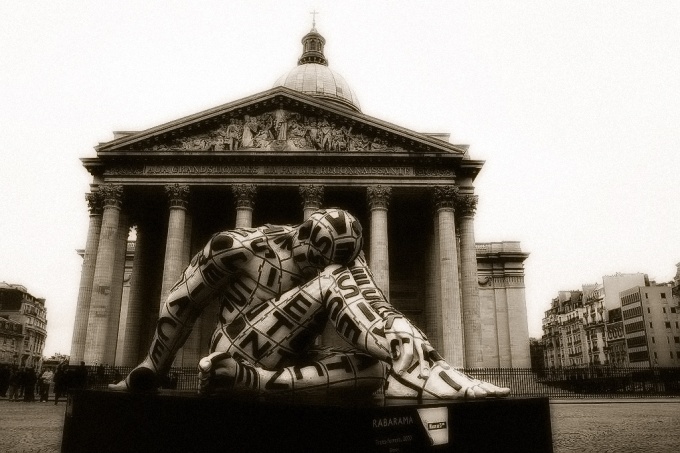
If it remains closed in a gallery or a museum, contemporary art needs the so-called shock-effect to involve a wider audience. The trilogy money-sex-death is still the most effective: an artwork becomes scandalous if it has an excessive cost, if it shows what should not be seen (for example bodies which are making love, or with no life) because this goes beyond what is considered acceptable. It was considered forbidden in classical theatre, from the Greek to Shakespeare, who represented obscene acts, as the word explains, “out of the scene”.
When art leaves the buildings and invades the public space, which we go through daily, we are playing a different game. In the latest decades the definition of “Public Art” has overlapped with the aesthetics of a monument almost completely replacing it. In Italy above all, monuments were intended as statues built in squares or parks to celebrate an event or glorify the value of heroes in perennial memory. Italy is, for example, full of equestrian statues. Later we have the monument of the Risorgimento, which reminds us of the great actions and men of the Resistance, which are two crucial episodes of the Italian history taken as models by various researchers to celebrate, in 2011, the 150th anniversary of a unified Country (a good example is the recent essay by Aldo Cazzullo, “Viva l’Italia”).
The typical shape of a celebrative monument is vertical. The ideal raises high towards the sky, reaching out of daily life. The colossal size of the statue makes us feel, inevitably, small, fallible and temporary. The monuments which have a horizontal extension are really rare, because memory must be seen from far away. Among the uncommon, remarkable exceptions is the “Monument to Auschwitz” by Pietro Cascella, finished in 1967, which expresses more its absence than its presence, silence rather than voice. It is amazing that, after almost 40 years, the architect Peter Eisenman opted for a similar solution in the “Memorial to the Murdered Jews of Europe”, inaugurated in Berlin in 2005.
Monumental sculpture is different from public art in that it doesn’t need to communicate links to the territory. Other than having a celebrative function, it is conceived and set up to satisfy a call for beauty. It enquires about the taste of inhabitants and tourists, and at the same time embellishes the urban landscape. The number of pictures people take in front of those statues and sculptures when they judge them to be pleasant shows how much they are appreciated. The subjectivity of each person’s opinion must be taken into account, but it cannot be denied that those works which harmonize with the context, resembling human shapes, receive the highest praise, especially those which are not too problematic, questioning, hostile or repellent. In this category, quite wide, there are figurative works by Fernando Botero, Igor Mitoraj, Jean-Michel Folon, now deceased, as well as Arnaldo Pomodoro’s columns and spheres, “Thread and Knot” by Claes Oldenburg and Cosije Van Bruggen in Cadorna Square in Milan, the “Igloo Fountain” by Mario Merz on the Spina 1 in Turin and several installations by Rabarama, the protagonist of this exhibition.
On the contrary, Public Art claims a necessary link to what surrounds it, from architecture to urban design, from society to the inhabitants’ needs, and it has the purpose of fitting into the human environment, with the utopian ideal of improving the conditions of man and environment. Because of this, such interventions ask questions rather than answer them, they often have vague and ephemeral shapes which the involvement of the user will complete (this is also defined, in fact, as “relational art”). They stimulate the intelligence of the audience and abandon the ideal of pure beauty. They are welcome on the pages of art magazines, but they are unlikely to end up in the albums of memories of those visitors who are fond of photography. In a definition of art which is maybe predictable and conformist, in a vision which does not include a peaceful coexistence of different languages and purposes, Public Art has citizenship in the contemporary ideology whereas monumental expressions are viewed upon with absurd suspicions, resulting from prejudice. According to this way of thinking, artwork which is appreciated by people is out of fashion, unsuitable, nineteenth century, and kitsch. There is no need to say that I totally disagree with this theory, as I share a more democratic, pluralistic and free vision of visual arts.
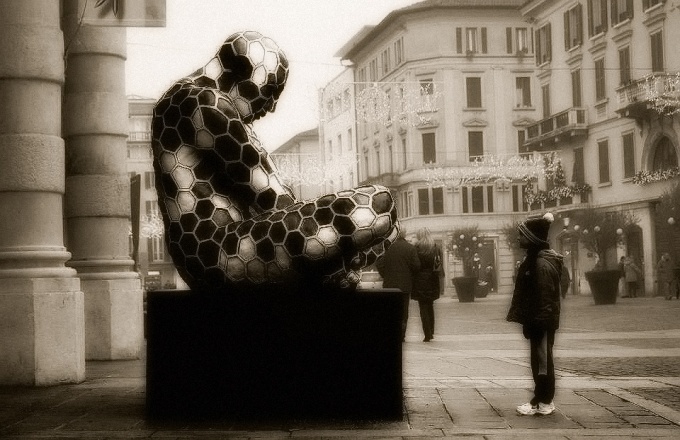
This long preamble, stimulated by the spurious arguments of the media which have preceded the installation of Ramarama’s sculptures in some squares in Firenze, has actually the function of introducing a change in the poetic style of the artist. The principal town of Tuscany, in fact, has stimulated a confrontation with ancient memories, unavoidable when a third millennium contemporary wants to deal with an investigation in the roots of history. Rabarama’s titanic sculptures, which are titanic also in the operational effort, give art back the sense of great undertaking, which seemed forgotten. They are set in the city of Florence, in its Renaissance squares and in the 19th Century Pagliere Building behind the Boboli Gardens. In this beautiful place, which holds a surprisingly contemporary taste, almost of industrial archeology style, we can find painting. Rabarama carries out this technique with perseverance, at the same time as completing her works in 3D plastic. At the centre of her research there is, as always, the man, according to the absolute anthropocentric conviction of the artist; this resounds as a strong desire for redemption of our disputed and rickety species. Rabarama’s sculptural shapes (together with two live body painting performances on the opening day) are a sign of aesthetic research addressed to the body, an instrument of dynamic and plastic evolution. They are also a further convergence between sculpture and painting resulting in site-specific temporary interventions, (her idea of a monument is also temporary).
They expand the ambivalent relationships of the opposed forces we find in nature – Yin and Yang, male and female, white and black, full and empty, positive and negative – existing together. Her sculptures mix Western rationalism and primitive esotericism, humanism and alchemy, almost in the will to investigate the ancestral matrix of our culture. As visible presences, already familiar to the places which host them, Rabarama’s works blend into the city itinerary and are confronted by the renaissance iconography of the buildings of Florence. In the homeland of Michelangelo, the sculptures planned and produced by Rabarama are mirroring the antiquity, and start a reciprocal/dependent relationship, exclusively for Florence, in a call for reflections between ancient and contemporary, modern and traditional. The material chosen for this monumental cycle momentarily sets apart the use of metal, no wonder, for marble from the neighboring city of Carrara, whose surface is “texturized” in a bas-relief style engraved pattern. A totally white skin where letters, numbers and symbols are engraved identifies these “urban furnishings”, which are transitioning as they belong to the historical memory of Florence, now in a new and contemporary iconography. Echoing the titles chosen for these works (Im-plosione, Ri-nascita, Tran-sito, Ri-volto, Re-cinta, Co-stell-azione, and Trans-porto), Rabarama chooses, once again, to interrupt words and concepts with a hyphen which introduces the possibility of a second meaning in Italian. The word pun “Anti-con-forme”, which gives the name to the entire project, is special. It implicates the suggestion of the Antiform, the American movement from the Sixties which opposed every accessory meaning given to artwork, which had to remain a simple object and nothing else, with no allusions or hidden meanings (Rober Morris defined his work “shape for shape”). Rabarama adds the need for the presence of an ancient element, timelessness, even the metaphysical, and above all, for the dogma of art which is sure of the need for precise formalization. Even though this is against a number of contemporary theories and fashions, Rabarama stands for a kind of art which is present, which can be seen and touched and which doesn’t stop with a hidden intention.
Originally published on Anticonforme catalogue, 2011
Luca Beatrice


